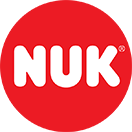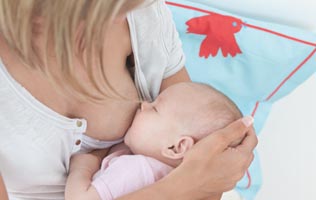Breast Pumps
Breast pumps - practical breastfeeding aids for everyday mum use
Feeding breast milk provides your little one with the most important nutrients to grow up healthy. But not every situation allows you to sit down relaxed and breastfeed your baby. In these cases, a breast pump is a valuable breastfeeding aid.
A common reason to use a breast pump is to return to work early. If you would like to resume your professional activities shortly after birth, but do not want to withhold your baby's valuable breast milk, you can use a breast pump to pump out daily rations of breast milk.
The use of a breast pump is also worthwhile if medical concerns arise. In other cases, using a breast pump is not only practical, it is also essential. For example, premature babies are often too weak to suck enough breast milk from the breast. However, since the nutrients contained in breast milk are of great importance for the healthy development of the premature baby, breast milk can be pumped out and fed to your baby with a bottle.
Find the right breast pump: electric breast pumps or manual breast pumps?
If you are planning to buy a breast pump as a breastfeeding aid, you should consider to what extent the pump should be used. There is a variant of the manual breast pump and that of the electric breast pump. Both carefully pump the milk out of the mother's breast. To make a decision as to which version is the right one for personal use, it helps to consult the frequency of use as a determining factor:
- Manual breast pumps: In order to pump out breast milk only occasionally, it makes sense to use a NUK manual breast pump. The NUK manual breast pumps are operated manually and in this way enable breast milk to be pumped out in an individually determined rhythm. They are efficient and can be easily combined with the NUK First Choice Breast Milk Containers.
- Electric breast pumps: For frequent or daily pumping of breast milk, the purchase of an electric breast pump from NUK is recommended. The integrated motor then takes over the pumping movement, which allows you to relax yourself while pumping. Thanks to various suction settings and suction rhythms, breast milk is pumped out gently and efficiently. Even so, the rhythm can be determined individually.
The correct handling of the breast pump
One of the most important aspects when using a breast pump is cleanliness. All parts of the breast pump should be carefully cleaned in advance. This must be done after each use and is particularly true for the parts that come into contact with the breast or breast milk. In principle, however, the entire device should be cleaned. After the breast pump has dried completely, it can be reused.
Breast pump cleaning in 4 steps:
- Remove residues of milk proteins with clear drinking water.
- Clean all parts with warm water and bottle cleanser or milk cleaning liquid. The moving parts such as breastshield, screw ring, flute, silicone valve and breast milk container.
- Then the parts should be dried thoroughly with a clean tea towel or left to dry.
- Regular sterilization of the breast pump parts is essential in order to give germs no chance. This can be done either by boiling in a pot, in the microwave, for example with the NUK microwave steriliser or a steam steriliser such as the NUK Vario Express, which is also available for home use.
Important: Don't forget to wash your hands before using the breast pump! Hands should be cleaned thoroughly for at least 20 seconds. Even if you only want to touch the parts of the breast pump. The cleaning of the breast is usually only necessary if lotion or other has been applied.
Storage of breast milk
Breast milk can be chilled, frozen and thawed in the breast milk container. The breast milk container can also be used for warming and feeding.
If the breast milk is not used immediately, you must close the filled breast milk container well with the sealing discs and the screw ring and keep it in the refrigerator or freeze it.
Use a deep-freeze pen to write the date and time on the breast milk container when you have drained or use labels. When freezing breast milk, do not fill the breast milk container more than 150 ml, as breast milk expands when it freezes.
If chilled breast milk is transported, make sure that the cold chain is never interrupted. Otherwise the milk could spoil and harm the baby. For example, use an insulated bag with cold packs. Thawed, warmed or not fed milk must not be frozen again, but must be disposed of.
Breast milk must not be thawed in the microwave, otherwise valuable ingredients will be destroyed and material damage to the container can occur. There is a risk of scalding due to uneven heating! If the milk is too hot, vitamins and valuable ingredients will be destroyed.
Always check the temperature of the milk before feeding your child.
To reach the correct drinking temperature of approx. 37 ° C, place the container with the thawed breast milk in the NUK baby food warmer, for example.
| Breast milk | Repository | Retention periods |
| Freshly pumped out | At room temperature | Max. 6-8 hours |
| Refrigerator (not in the door) | 72 hours at 4 ° C | |
| Freezer compartment of the refrigerator | 2 weeks | |
| Freezer / cabinet | 6 months at -18 ° C | |
| Thawed unopened | Refrigerator (not in the door) | 24 hours at 4 ° C |
| Thawed open | Refrigerator (not in the door) | 12 hours at 4 ° C |
| Thaw the milk | Gentle in the fridge | approx. 24 hours at 4 ° C |
| At room temperature, then feed immediately | ||
| If it has to be quick: thaw the container with breast milk under running cold or lukewarm water (max. 37 ° C), then use it immediately. |




